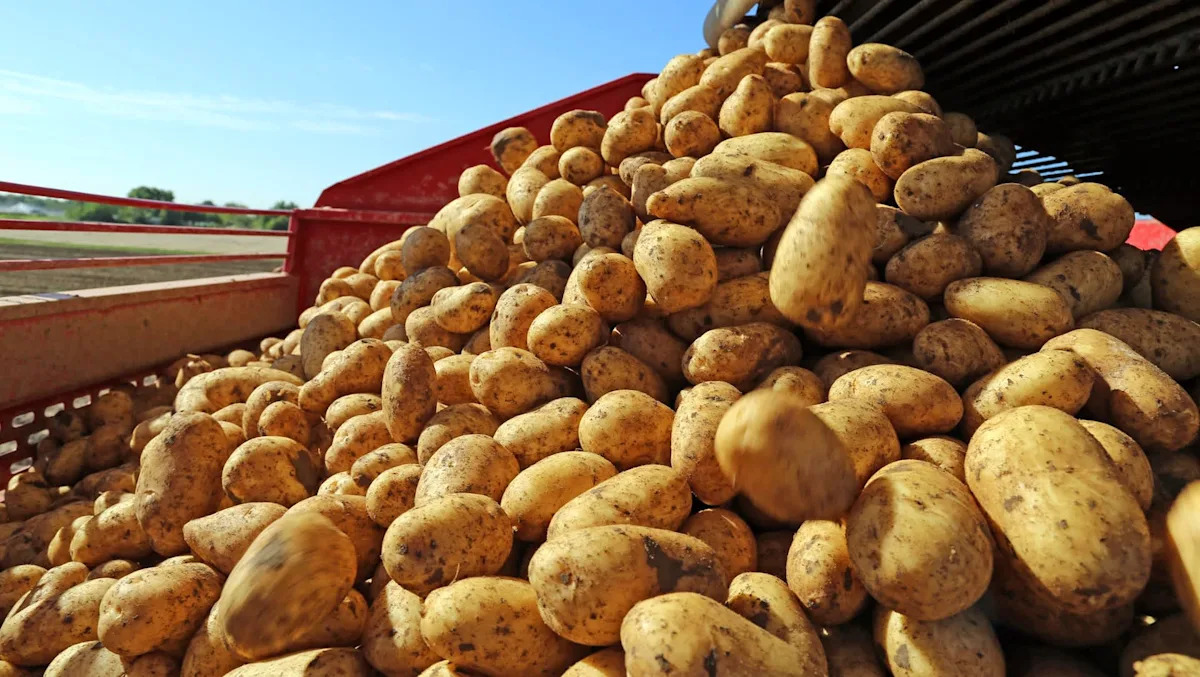Potato shelves across major supermarkets are running bare in South Australia as farmers in the region struggle with one of their toughest seasons in years, the Australian Broadcasting Corp. reported. The shortages have triggered steep price rises, leaving shoppers paying far more for a staple food.
What’s happening?
South Australia produces 80% of the country’s fresh potatoes, but extreme weather and drought have slashed harvests in key growing areas.
Mitolo Family Farms, which normally grows 200,000 tonnes each year, reported yields were down 10-12%. “There are significant shortages because it wasn’t just us; all fresh market suppliers grow in similar regions,” said John Tselekidis, the company’s head of sales and marketing, per ABC News.
The harvest was worsened by hot spells followed by cold and windy conditions. These swings damaged crops and created quality issues such as skin staining, which left some potatoes unsellable.
The supply squeeze pushed prices up dramatically. “They probably increased between 50 and 200%,” said Renee Pye, general manager at grower Pye Group, per ABC News. She estimated production was down 20-30%. “We’re just not seeing as many potatoes coming out of the ground as what we had planned on, so we’re short of what we can be supplying,” she said.
Why is this important?
Households are already battling higher grocery costs. The jump in potato prices means yet another strain on family budgets. Farmers warned the shortages would last for weeks, keeping prices elevated through October.
The problem also highlights how hotter, harsher conditions are disrupting food systems. When drought and temperature swings damage crops, supplies tighten, which pushes up costs for basic items and threatens food security. The ripple effect extends to restaurants and food manufacturers that rely on steady supplies of potatoes.
Similar disruptions have hit other crops in recent years, spiking global cocoa and coffee prices, showing how vulnerable everyday foods are to extreme weather and shifting growing conditions.
What’s being done about it?
Farmers were beginning their spring harvest, and supermarkets said supplies should improve soon, ABC News reported. A Coles spokesperson said they expected an increase “as our growers reach the end of last year’s crop and get ready to harvest for the new season.” Woolworths also said things should “return to normal in [the] coming weeks.”
Growers and market leaders urge customers to buy imperfect produce, which tastes the same but might not look pristine. “If a potato has a mark on it and it made the shelves at your local fruit and vegetable store, it’s still going to taste perfectly fine,” said Penny Reidy of the South Australian Produce Market.
Consumers can also save money on groceries by planning ahead and being flexible with what they buy — steps that can help households weather short-term supply shocks.
Join our free newsletter for easy tips to save more and waste less, and don’t miss this cool list of easy ways to help yourself while helping the planet.

